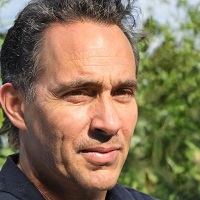Bermuda grass is a very popular warm-season grass that can create a lush, even lawn after a single seeding. It’s also common to find Bermuda grass plugs and sod being used in southern states. Knowing when to plant Bermuda grass, whichever form you plan to work with, is key to getting the best results in the least amount of time.

When to Plant Bermuda Grass (Best Time of the Year) – Short Answer
The best time to plant Bermuda grass, as a general rule, is in the spring for Bermuda grass seed or Bermuda grass plugs. The best time to plant Bermuda grass sod, however, is in early fall in most states and USDA growing zones.
Factors That Could Affect When You Should Plant Bermuda Grass
Knowing when your Bermuda grass seeds, plugs, or sod has the best chance of survival comes down to basic things like the type of Bermuda grass you wish to plant, the heat, water, and climate data.
The Form of Bermuda Grass You Plan to Plant
Before you consider climate, temperature, and rainfall it’s crucial to know if you want to plant Bermuda grass plugs, seeds, or sod. While plugs and seeds can both be planted at about the same time before the hottest part of the year, Bermuda grass sod should be planted after the hottest part of the year.
The Climate Where You Live
Now that you know which form of Bermuda grass you want to plant, you’ll need to consider the climate you live in. Temperatures that are too hot or too cold for long periods will influence how well seeds will sprout or how well plugs and sod will root and spread. The local climate can also affect rainfall which will require you to alter your watering schedule.
If you were wondering, “Can you plant Bermuda grass in the summer?”, your best source for an answer would be historical climate data. In most regions, summers are too hot and dry to reliably plant Bermuda grass. However, in zone 5b or 6a, you could get away with planting Bermuda grass seeds in early summer as temperatures are just starting to reach ideal germination levels then.
The Temperature of the Ground
This is the factor that we’re really talking about when we mention seasons. For example, if you’re asking, “Can you plant Bermuda grass in the fall?” The overall answer is “yes”, whilst the more specific answer is “Yes, but only if the ground is above 75F for the entire season of fall.”
Knowing when to plant Bermuda grass seeds is all about temperature ranges. If the ground is too cold and you plant grass seed, the seed may enter dormancy.
If the seed sprouts and then the ground gets too cold (under 60F), the sprouts will die and the seeds will no longer be viable.
If the ground is too cold when you lay sod or if it gets cold within 4 weeks after, the sod may not root properly.
Drought and Rainfall
A sudden, unexpected bout of wet or drought-like weather can dramatically alter how well your newly-seeded Bermuda grass lawn will do. Making sure you use the appropriate type of cover can help mitigate too much rain, while ensuring you have access to stored water is key to mitigating the effects of a drought or other dry spell.
Does the Ideal Time Differ Depending on Whether You Use Seed, Plugs, or Sod?
Yes, the ideal time that you would want to plant Bermuda grass will be vastly different if you plan to lay sod compared to planting seeds or plugs. The chart in the section below can help you determine the ideal time to plant either plugs/seeds or sod specific to your state or region.
The overall ideal time to plant seeds or plugs is late spring when temperatures are starting to reach 80F on average, but there is still a decent amount of rainfall.
The ideal time to lay Bermuda grass sod is when temperatures have already begun to cool significantly in mid to late fall. Depending on your zone, it may even be possible to lay sod in early winter.
If you miss this window and still want to plant Bermuda grass sod without waiting a whole year, you can do so in the early spring of the following year once average temperatures are above 70F on average.
Optimum Time to Plant Bermuda Grass in Different Locations
Now you know the best general time to plant Bermuda grass seed, sod, or plugs. However, there will always be a more specific time at which you should plant these based on your location. Below is a chart from which you can learn the best time to plant in the 8 states where Bermuda grass is popular.
| State | Plugs/Seed | Sod |
|---|---|---|
| Alabama (USDA Zones 7b and 8b) | Late Spring to Early Summer | Early to Mid Autumn |
| Arizona (USDA Zones 9b to 10a) | Late Winter to Early Spring | Late Autumn |
| Florida (USDA Zones 8a to 11b) | Spring to Early Summer in Northern Florida or Late Winter to Early Spring in Southern Florida | Early to Mid Autumn in Northern Florida or Mid to Late Autumn in Southern Florida |
| Georgia (USDA Zones 6a to 9a) | Early to Mid Summer in Northern Georgia or Early to Mid Spring in Southern Georgia | Early Autumn in Northern Georgia or Mid to Late Autumn in Southern Georgia |
| Oklahoma (USDA Zones 6a to 8b) | Early to Mid Summer in Northern Oklahoma or Early to Mid Spring in Southern Oklahoma | Early Autumn in Northern Oklahoma or Mid to Late Autumn in Southern Oklahoma |
| South Carolina (USDA Zones 8a to 9b) | Early Spring | Mid to Late Autumn |
| Texas (USDA Zones 6a to 9b) | Early Autumn in Northern Texas or Mid to Late Autumn in Southern Texas | Early Autumn in Northern Texas or Mid to Late Autumn in Southern Texas |
| Virginia (USDA Zones 5a to 8a) | Early Summer in the Northwest Part of the State and Mid Spring in the Southwest Part of Virginia | Summer in the Northwest Part of the State and Early Autumn in the Southwest Part of Virginia |


Leave a Reply